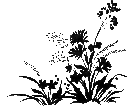 |
The Preserve |
News and Events |
Natural History |
The Trail |
Monitoring |
Restoration |
Library |
Organization |
|
Todmorden Mills Wildflower Preserve
|
Habitat Restoration
The habitat restoration efforts at Todmorden Mills Wildflower Preserve are the core of our work. The main restoration activities are: habitat creation and plantings, invasive plant control and garbage control.
Simply designating the natural area at Todmorden Mills as a Wildflower Preserve is not, in and of itself, sufficient to enable the area to rehabilitate back to more original types of vegetation. Natural succession, which will normally result in forests, has been subverted in the city because the candidate pool of colonizing species is largely composed of introduced plants and animals, many of them invasive. We have had to intervene directly in the site to establish native plants. Forest understorey habitatSome of the first plantings by the group involved wildflowers which had been rescued from deciduous forests north of the City which were destined for clearance to make room for Highway 407. These were planted in various forested locations, but especially the area at the start of the Trail near the Don Train Station. Since the White Trilliums do well here, it is known informally as "Trillium Patch". Pond habitatThe first major project undertaken by TMWPC was the enlargement and enhancement of a natural depression below the historic Helliwell House. The margins of the created pond were then planted with natiuve species known to grow in wetlands. Species included Blue-flag iris, sedges and rushes, and elderberry shrubs. Other species of plants and animals have colonized naturally, including Muskrat, dragonflies and Green frogs. Today, the pond is a popular stop on the trail, and it has provided educational opportunities for visiting school groups. Oxbow wetland enhancementsOur largest project to date involved clearance and re-planting of the Oxbow wetland margins, and the installation of a trail and boardwalks. Completed in 2000, the 500-metre trail now affords visitors views of a variety of habitats. Dry meadow habitatAn area of compacted fill just west of the Oxbow has been planted with a range of native wildflowers and grasses which can tolerate sunny, dry conditions. Forest gap creationMore recently, we have begun to clear small areas of exotic forest and replant with native species. This patchwork method will eventually result in a new forest canopy.
The Preserve has a number of serious invasive plants. These plants spread rapidly in the Preserve, out-competing and displacing native plants and eventually coming to dominate large areas. The most important invasive plants in the Preserve are: Manitoba maple, Garlic mustard, Pale Swallow-wort (also known as dog-strangling vine), Himalayan balsalm, Common Reed and Japanese knotweed.
Garbage blows into the Preserve along the boundary with the Don Valley Parkway, it is dumped in the parking lot by local contractors, and it is is dumped by residents along Broadview Avenue and Chester Hill Road. Each spring TMWPC in partnership with Friends of The Don East (FODE) has a clean-up of the site. This typically yields several tonnes of garbage. We have also initiated a survey of the garbage distribution in the Preserve as a precursor to developing a management plan. |
| Copyright © 2003-2004 Todmorden Mills Wildflower Preserve |
